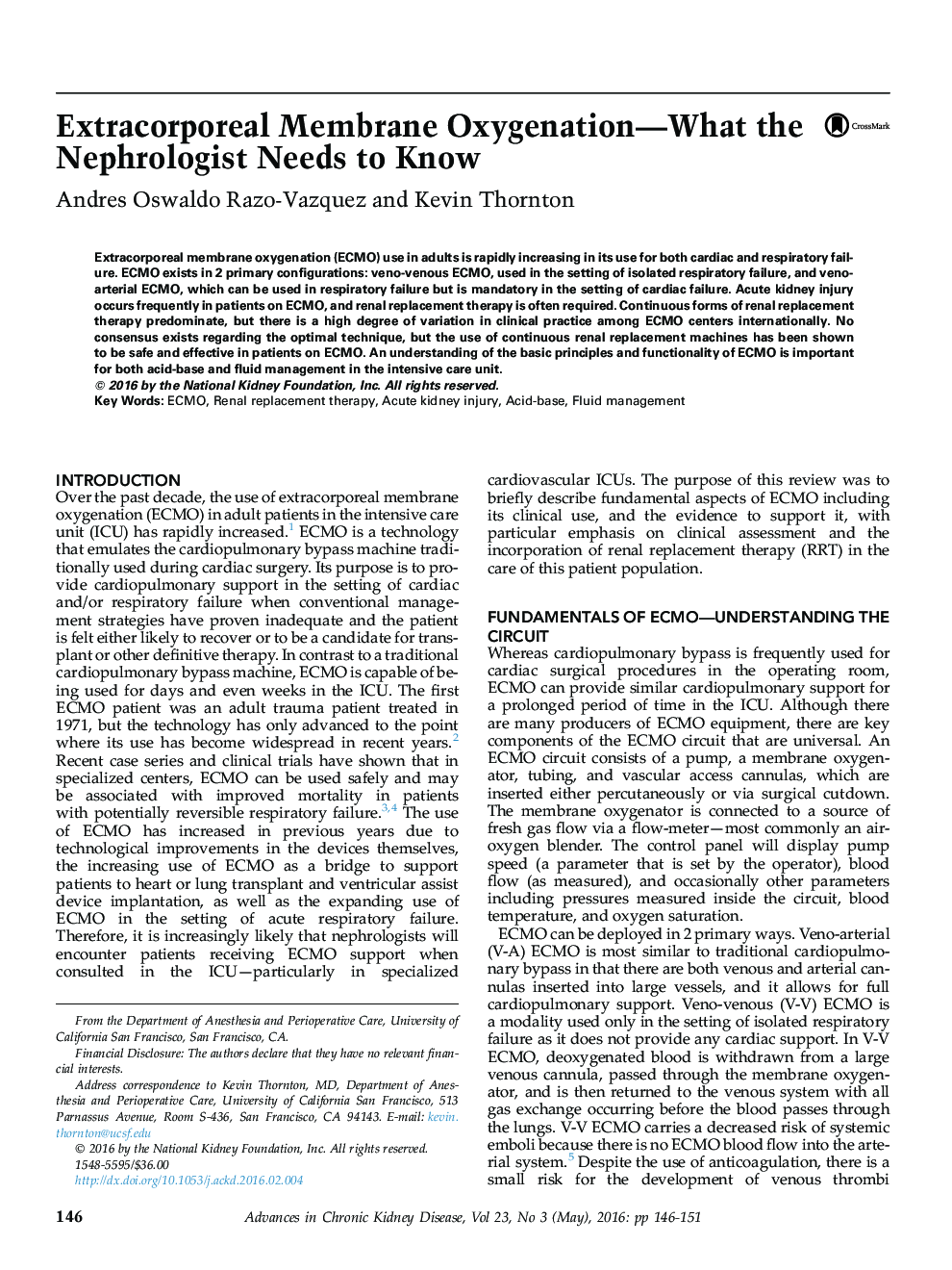| Article ID | Journal | Published Year | Pages | File Type |
|---|---|---|---|---|
| 3846246 | Advances in Chronic Kidney Disease | 2016 | 6 Pages |
Abstract
Extracorporeal membrane oxygenation (ECMO) use in adults is rapidly increasing in its use for both cardiac and respiratory failure. ECMO exists in 2 primary configurations: veno-venous ECMO, used in the setting of isolated respiratory failure, and veno-arterial ECMO, which can be used in respiratory failure but is mandatory in the setting of cardiac failure. Acute kidney injury occurs frequently in patients on ECMO, and renal replacement therapy is often required. Continuous forms of renal replacement therapy predominate, but there is a high degree of variation in clinical practice among ECMO centers internationally. No consensus exists regarding the optimal technique, but the use of continuous renal replacement machines has been shown to be safe and effective in patients on ECMO. An understanding of the basic principles and functionality of ECMO is important for both acid-base and fluid management in the intensive care unit.
Related Topics
Health Sciences
Medicine and Dentistry
Nephrology
Authors
Andres Oswaldo Razo-Vazquez, Kevin Thornton,
